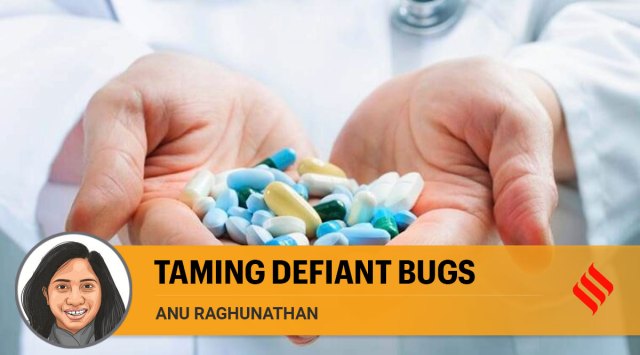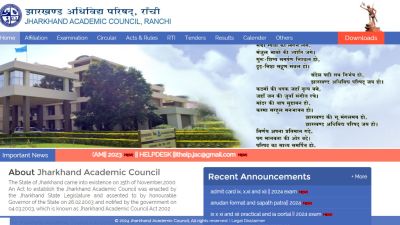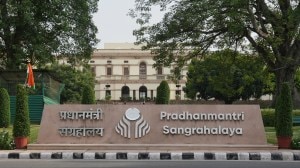- India
- International
The superbugs are here – and they are resistant to antibiotics
Anu Raghunathan writes: Anti-microbial resistance is an impending health catastrophe and requires a multi-disciplinary approach and investment in R&D
 Tackling AMR and coming up with solutions means navigating complex domains of science and society to develop cross-disciplinary solutions. (File)
Tackling AMR and coming up with solutions means navigating complex domains of science and society to develop cross-disciplinary solutions. (File) Antimicrobial resistance (AMR), often also called antibiotic resistance, is a global health challenge and a looming public health crisis. The WHO has declared it as one of the top 10 health threats facing humanity. Microorganisms (bugs) are everywhere with some being helpful like the yoghurt-making lactobacillus and some being harmful like the typhoid-causing salmonella. Antimicrobials, chemicals or molecules that kill harmful bugs, are the backbone of modern medicine. Improperly used antimicrobials create selective pressure on bugs. The bugs most vulnerable to the drugs die quickly, while the most resilient ones survive, replicate and become superbugs. AMR occurs when superbugs develop and antimicrobials stop working.
Reversing AMR and or finding solutions for it is a tall order since we are up against natural selection — Darwinian evolution, the process by which we evolved. The Covid-19 pandemic has given us a painful reminder of what it means to have no vaccine or medicine to tackle an emerging pathogen. AMR is bad news on a similar scale except it’s a silent killer. Covid has also taught us that in a global crisis government, industry and society can come together and work together to find solutions.
Tackling AMR and coming up with solutions means navigating complex domains of science and society to develop cross-disciplinary solutions. AMR national action plans (NAPs) have been implemented in several surveyed economies including India for human health. However, the development and implementation of antimicrobial plans for animals and the environment that equally impact AMR hasn’t been adequate.
Some recipes for reducing and potentially reversing AMR can be implemented by each one of us individually or collectively at the ground level.
The first prescription is prevention. Disease prevention and wellness are key to public health and thus preventing infections whenever and wherever possible is equivalent to averting resistance. We need to spearhead sanitation drives, ensure a clean water supply and support hospital-driven infection-control programmes. Reducing AMR also requires prescribing antimicrobials judiciously and only when they are absolutely needed. There is also a need for more cohesion within management strategies. Coordination across the animal industry and environmental sectors to prevent the unnecessary use of antibiotics in farms — this nurtures drug-resistant organisms in our food supply — is necessary. Vaccines are also a powerful tool to prevent infections and have the potential to curb the spread of AMR infections. However, immunisation programmes are not comprehensive and exhaustive yet for many infectious diseases. A second prescription closely connected with prevention is the development of robust surveillance systems that allow us to detect resistant pathogens of all kinds in the environment and hospitals that would eventually allow containment.

The third prescription is to invest heavily in research and development through both government and private funding. There is an urgent need for a strong pipeline of new antibiotics; an essential component in restoring the balance and ensuring that we have new tools in the fight against AMR. Bringing a new antibiotic from basic research through clinical trials takes more than a decade and requires upward of $1 billion. However, the profits on these drugs are negligible. Hence, the fourth prescription would be to formulate new types of financial incentives to measure return on investment and measure profitability by the social value of the antibiotic, breaking the conventional link between sales and profits. Last but not least, we need to bring a collective moral vision to AMR and start thinking of antibiotic/antimicrobial drugs as limited resources that should be available to all.
Although seemingly distant and abstract, AMR is in the air and potentially catastrophic for those burdened by it. Longer hospital stays due to prolonged illness, death and disability are huge financial challenges for those impacted. The success of modern medicine, women’s health, infectious diseases, surgery and cancer would be at increased risk for lack of working antimicrobials. The cost of AMR to the economy is significant and it is critical to develop policies and implement them through a holistic “One Health” approach.
The writer is a Senior Principal Scientist at CSIR-National Chemical Laboratory. Views are personal
EXPRESS OPINION
More Explained
Apr 19: Latest News
- 01
- 02
- 03
- 04
- 05









































